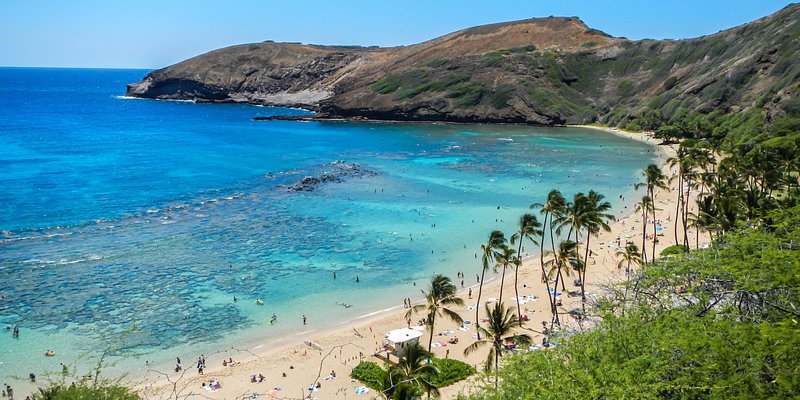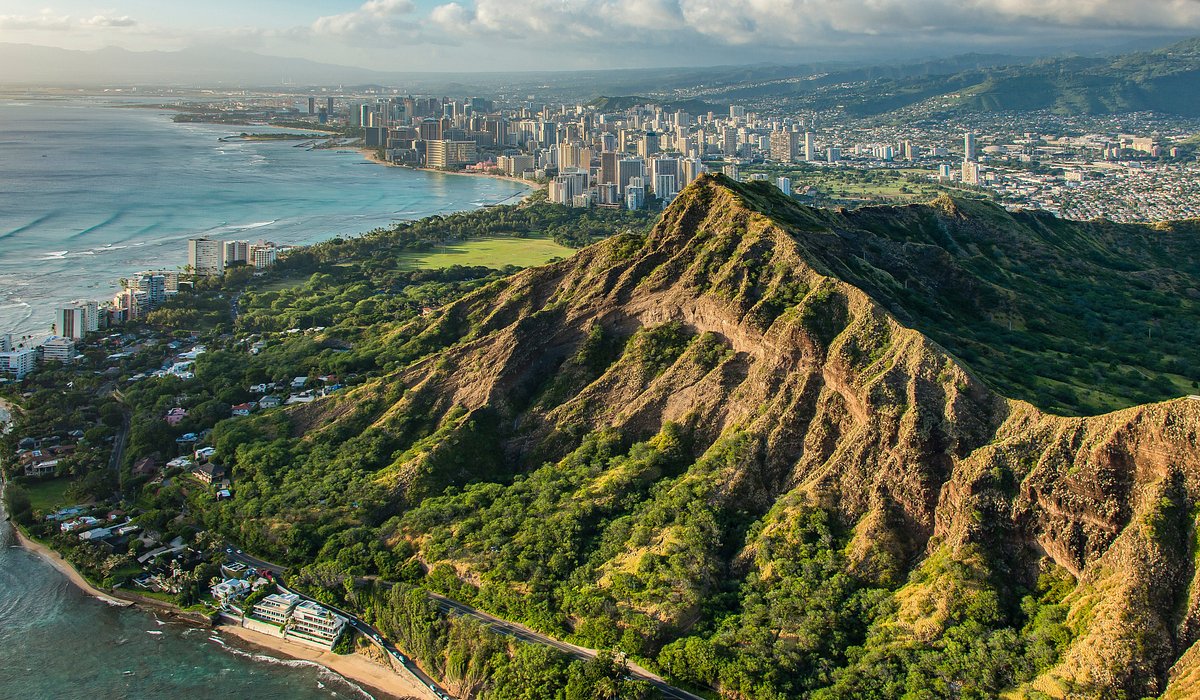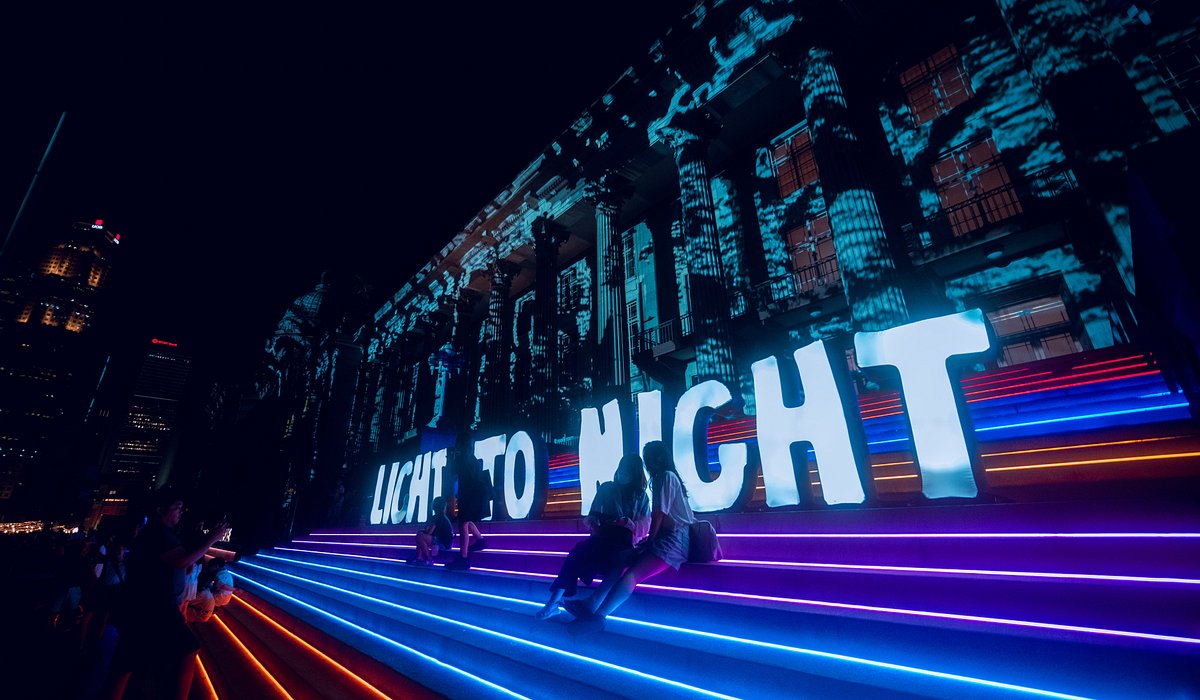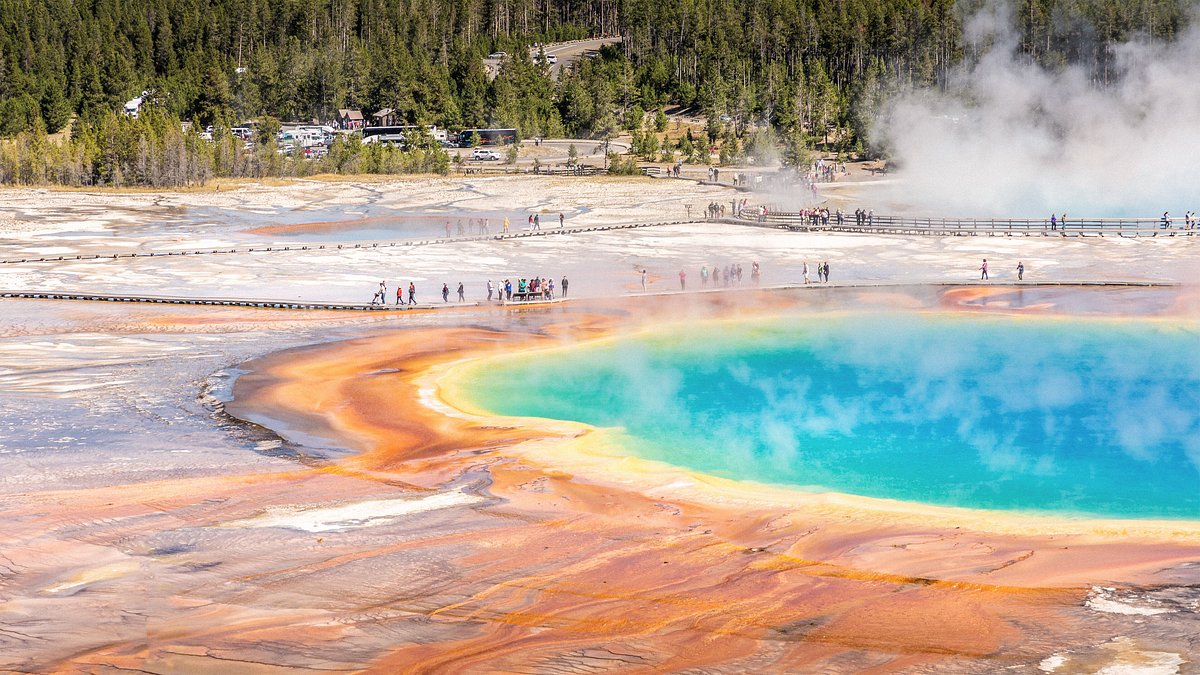Here’s how to pick which island is right for your next vacation.
Hawaii is Hawaii, right? Once you’ve visited the different islands as much as I have, you realize that they definitely have their own vibe, their own culture and even their own famous dishes.
The Aloha State comprises eight major islands, six of which welcome tourists. The two most-visited Islands are Oahu and Maui, and both are popular because they offer U.S. travelers a passport-free visit to the South Pacific and a taste of all things Hawaiian—just in two very different settings.
To help you settle the Oahu vs. Maui debate and decide which island best matches your vacation style, we’ve gathered all the details, from landscape and culture to resorts and activities.
Oahu: Flying into Honolulu can be jarring. After staring down at nothing but the sapphire-blue Pacific Ocean for hours, you’ll finally spot waves breaking against a sandy shore—but then there are suddenly buildings everywhere, a sprawling carpet of rooftops capped by blocks of high-rise condos.
Welcome to Oahu, the island that’s home to almost one million Hawaiians, or roughly two-thirds of the state’s population. A whopping 81 percent of them live in or near Honolulu, which means you’ll be vacationing in a dense urban environment, at least in the capital city and its most famous resort area, Waikiki. Oahu’s North Shore, should you venture there, is an entirely different story. Underdeveloped to the extreme, it’s home to quirky small towns, mystical mountains, off-road adventure, and some of the world’s wildest surf beaches.
Maui: While not exactly sleepy (that’s Kauai’s jam), Maui is definitely decibels lower on the intensity scale than Oahu. Home to about 165,000 residents, it’s an island that offers everything one imagines Hawaii to be. Ringed by golden-sand beaches on its southern and western shores—where the Wailea, Kaanapali, and Kapalua resort areas are—and rugged black lava along its eastern coastline, Maui is known for its mountains, waterfalls, and lush landscapes. Yet its entire center is dominated by the slopes of 10,023-foot Haleakala, a dormant volcano with a visitor’s center that’s above the clouds and a rust-hued crater landscape that feels lifted from the surface of Mars.
Maui is mainly known for being mellow—exactly why many repeat visitors like it. Note: A devastating wildfire in August 2023 destroyed the historic town of Lahaina and killed 100 residents. It was the worst natural disaster in the history of Hawaii. Lahaina remains inaccessible to tourists, but the neighboring West Maui resort areas of Kaanapali and Kapalua are open.
The takeaway: Oahu has nonstop energy, so it’s ideal if you love to shop, people watch, sip cocktails in trendy lounges, and enjoy cultural activities such as museums and live music. Maui is the better choice if you’re looking for beachfront relaxation and nature-based adventure.
Oahu: Honolulu’s Daniel K. Inouye International Airport (HNL), located about a thirty-minute drive from Waikiki, receives more than 70 flights daily from the U.S. mainland. Alaska, American, Delta, Hawaiian, Southwest, and United all fly to Honolulu and collectively offer nonstops from 23 U.S. cities. It’s a 4-to-5-hour flight from West Coast cities like Los Angeles, San Francisco, and Seattle. Still, there are also longer nonstops from major airline hubs, including Atlanta, Chicago, Denver, Dallas, Houston, Salt Lake City, Boston, New York, and Washington, DC. Flights take more than 11 hours from the East Coast.
Maui: You can fly nonstop to Maui’s Kahului Airport (OGG) on Alaska (from Los Angeles; Oakland; Portland, OR; San Francisco; San Jose; Seattle; and Anchorage), American (from Dallas, Los Angeles, and Phoenix), Delta (from Los Angeles, Salt Lake City, and Seattle), Hawaiian (from Las Vegas; Los Angeles; Oakland; Portland, OR; Sacramento, San Diego, San Francisco; San Jose; and Seattle), Southwest (from Oakland, San Diego, Sacramento and San Jose) and United (from Chicago, Denver and Los Angeles).
The takeaway: While flights to both islands abound, especially from the West Coast, there are more options to Oahu. Additionally, there are no nonstops to Maui from the East Coast, which makes Oahu an easier choice for East Coasters seeking direct access—although flying nonstop to Honolulu and connecting to Maui on a short inter-island Hawaiian Airlines flight is an option.
Oahu & Maui: The Hawaiian Islands enjoy year-round tropical weather—highs of around 85 degrees from May to October and 78 degrees from November to April—with temperatures about 10 degrees cooler at night. The wettest months are November to March, but rain is often localized, and it could be sunny just a short drive away. Peak crowds arrive from December to March (especially mid-December to mid-January) and during July and August.
May, June, October, and November are ideal months to visit—unless you want to whale-watch. If so, you’ll need to visit Maui between December, when the humpbacks start arriving, and late April, before they begin to leave.
The takeaway: With only 116 miles separating them, Oahu and Maui have similar weather, so the deciding factor may be flight and hotel availability and your personal preferences.

Oahu: Waikiki, the kitschy yet alluring epicenter of Oahu tourism, is home to the island’s most famous hotels, many offering views of the landmark volcanic cone Diamond Head. There are also several upscale resorts located to the west of Honolulu in Ko Olina. For a central location, it’s hard to beat the towering beachfront Sheraton Waikiki or the neighboring Moana Surfrider, A Westin Resort & Spa, with its historic colonial-style façade (it dates to 1901). For a luxury stay in Waikiki, opt for elegant Halekulani and the adjacent Halepuna Waikiki by Halekulani for something more budget-friendly. Beyond Honolulu, the Four Seasons Resort Oahu at Ko Olina is a lovely spot to unwind, or you can channel “Moana” moments at Aulani, A Disney Resort & Spa. For North Shore seclusion, there’s the 1,300-acre Turtle Bay Resort.
The takeaway: Oahu resort life is centered around walkable Waikiki with its many restaurants and bars, while properties outside Honolulu offer more limited dining or nightlife beyond the resort. On the other hand, Maui’s three main resort areas have more of a community setting with more dining and activity options, especially if you have a rental car.
Oahu: Known as “the Gathering Place,” Oahu is one of the centers of traditional Hawaiian culture as well as a melting pot of people from around the Pacific region and beyond. Amid Honolulu’s modern bustle, you will find pockets of Old Hawaii—such as Iolani Palace, the last residence of Hawaiian monarchs—plus a multi-ethnic populace that includes Japanese, Filipino, Chinese, Vietnamese, Korean, Portuguese, and Pacific Islanders whose ancestors emigrated here generations ago. Oahu is also home to Pearl Harbor, so 20th-century history is part of its heritage.
But it is Hawaiian culture that permeates all aspects of life here. Street names—such as the Likelike (pronounced lee-keh-lee-keh) Highway—have repeat letters because the Hawaiian alphabet contains all five vowels but just seven consonants (H, K, L, M, N, P, and W). Traditional Hawaiian welcomes are also commonplace, with mellifluous slack-key guitar rhythms, greetings of “Aloha” and “Mahalo,” and leis strung with aromatic plumeria blossoms.
Maui: Maui’s cultural history is equally intertwined with the language and traditions of its first Polynesian settlers more than 1,000 years ago and the influences of 19th-century whalers and missionaries from the U.S. mainland and plantation workers from Japan, China, and the Philippines. Hawaiian traditions are celebrated for tourists during nightly luaus and cliff-diving ceremonies on Kaanapali Beach and more reverentially during cultural festivals. Resorts offer lei-making classes and hula lessons. You can also visit farms to learn about local agricultural products, from pineapples to taro, and drive through Upcountry’s verdant farm and ranch lands on the lower slopes of Haleakala to the eclectic cowboy town of Makawao.
The takeaway: You’ll have more cultural sites to visit on Oahu, but Maui is deeply infused with traditional Hawaiian culture and rhythms.
Oahu: Traditional and trendy eateries exist side-by-side in Honolulu. Order like a local and enjoy a plate lunch of loco moco (rice topped by a hamburger patty and fried egg and then smothered in gravy and served with macaroni salad) or a poke bowl (marinated raw tuna) and later cool off with shave ice (crushed ice topped with flavored syrup). Or go modern pan-Asian and sip a lychee martini as you enjoy hot soba noodles with seared duck and mushrooms, an izakaya-style small plate tasting menu, and mochi donuts. Traditional Hawaiian flavors not to miss include:
- Kalua pig (pork slow-cooked in an earth oven)
- Taro (often served as chips or pounded into the paste-like poi)
- Laulau (pork and butterfish wrapped and cooked in a taro leaf)
- Ulu (breadfruit, served in a variety of ways)
- Malasadas, Portuguese donuts filled with flavored creams, are another must-try
Maui: There’s no large city on Maui—Kahului (pop: 28,000) is the island’s commercial hub—so the dining scene is more spread out. Wailea, Kaanapali, and Kapalua each have a selection of non-resort eateries (sadly, Lahaina, not far from Kaanapali, was home to many popular restaurants before the 2023 fire). Still, it helps to have a rental car on Maui if you want to dine around. Fresh seafood is undoubtedly the star, while farm-to-table menus are also popular.
The takeaway: You’ll eat well on both islands, especially if you like Asian flavors and fresh fish.

Oahu: Modern surfing was invented in Waikiki (and has Polynesian and royal Hawaiian roots), so it seems like everyone who lives here regularly paddles out to catch a wave. Waikiki Beach, watched over by a statue of Hawaiian surf legend Duke Kahanamoku, is one of the best places to learn. Other popular activities include hiking to the top of Diamond Head for a sweeping view of Honolulu (reservations now required), visiting the World War II memorials at Pearl Harbor, learning about Hawaiian history at Iolani Palace and the Bishop Museum, snorkeling in Hanauma Bay (reservations required); and driving the island’s North Shore past the big-wave surf beaches or taking an off-road eco-tour into the Waianae mountain range.
Maui: All kinds of adventures await on Maui, where activities include: Experiencing sunrise or sunset from the summit of Mt. Haleakala (as well as hiking its volcanic trails or biking down the roadway from its summit through Upcountry), snorkeling the submerged crater at Molokini; whale-watching (December to April) and dolphin-watching (year-round); ATV tours through the West Maui Mountains; driving or taking a guided excursion along the Road to Hana (it has more than 600 hairpin turns and 59 one-lane bridges); and playing golf at one of the island’s dozen public courses.
The takeaway: While each island offers plenty of activities, Oahu has something for history lovers and adventure-seekers alike. Maui mostly wows with outdoor thrills and easy access to excellent snorkeling and whale-watching.
Oahu: Flights to Oahu from West Coast cities range from $225 to $550, depending on the date, while nonstops from the East Coast range from $600 to $1,000. In Waikiki, you can expect to pay at least $300 per night for a hotel and upwards of $450 per night (and more than $900 per night for a luxury property) during peak periods.
Maui: Flights to Maui from the West Coast can be as cheap as $250, although you may pay $700 or more during peak periods. Connecting flights from East Coast cities begin at around $500 and increase to more than $1,000 during peak periods. Maui resort rates generally range from $300 to $650 per night (and more than $1,000 for a luxury property), depending on your travel date.
The takeaway: It’s a wash. Neither Hawaiian island is a cheap place to visit—unlike the Caribbean and Mexico, there are no all-inclusive resorts, and dining is expensive—but going the distance to experience Hawaii’s unique culture makes an Oahu or Maui vacation worth the expense.




